
The Tip Often Forgotten: Explore Pottery for Optimal Houseplant Health
Types of Pottery for Houseplants
Terra Cotta: Nature’s Gift to Plants
Terra cotta has long been favored by gardeners for its classic look and natural properties. This porous clay material allows air and water to pass through the walls, promoting healthy root systems by preventing waterlogging and facilitating root aeration. These pots are ideal for plants that thrive in a dry environment, such as succulents and cacti. The earthy tone of terra cotta complements the green hues of houseplants, creating a natural and warm aesthetic. Some really love the look of terra cotta that has been used and has water marks and mineral deposits! Moreover, the weight of terra cotta pots provides stability, which is particularly useful for top-heavy plants. Although they’re prone to cracking in freezing temperatures, for indoor use, terra cotta remains a durable and timeless choice that can enhance the growth and appearance of your indoor plants.
Glazed Pots: A Colorful Option
Glazed pots offer a vibrant alternative to the natural look of terra cotta. Their glossy or matte finish, available in a multitude of colors, can brighten up any space and add a touch of personal style to your indoor plant collection. Beyond aesthetics, the glaze on these pots creates a non-porous layer that helps retain soil moisture, which is beneficial for plants that require a more consistently moist environment. While this is a plus for hydration-loving plants, it’s important to ensure these pots have drainage holes to prevent overwatering. Glazed pottery is also less susceptible to weather-related wear, making it a durable choice for both indoor and outdoor settings. When choosing glazed pots for your houseplants, consider the moisture needs of your plants and select a pot that will cater to those requirements while also satisfying your decorative preferences.
Exploring Unconventional Materials: Plastic and Bamboo Pots
Plastic and bamboo pots stand out as unconventional choices that bring unique benefits to the table. Plastic containers are lightweight, affordable, and come in an array of designs. Their non-porous nature keeps soil moist, which can be advantageous for plants needing consistent hydration. However, it’s crucial to ensure they have proper drainage to avoid waterlogging. On the sustainability front, bamboo pots are gaining popularity. Made from renewable resources, they offer an eco-friendly option for gardeners who are environmentally conscious. Bamboo pots are typically biodegradable and can add a contemporary, natural look to your indoor garden. Both plastic and bamboo pots are versatile and practical for a variety of houseplants. When selecting pots made from these materials, consider the environmental impact, the watering needs of your plants, and the style that best fits your living space.
The Right Pot for Your Plant: Tailored Solutions
Choosing the right pot for your plant is not just about matching styles; it’s about understanding the specific needs of each plant species. Different plants require different moisture levels, soil types, and temperature conditions. A tailored solution involves selecting a container that will optimize your plant’s health and growth and your watering habits. For example, orchids thrive in pots that offer plenty of drainage and airflow, making mesh pots or specialized orchid containers ideal. Similarly, moisture-loving tropical plants may benefit from self-watering pots that help maintain consistent soil moisture levels. When selecting a pot, consider the plant’s root system size and growth pattern. A pot that’s too small can restrict growth, while one that’s too large can cause the soil to dry unevenly. Tailored pot solutions ensure that your indoor plants have the best possible environment to flourish and you don’t feel burdened by caring for them.
All Shapes and Sizes: Mix and Match Strategies
The shape and size of pottery are just as critical to the health of your houseplants as the material from which the pot is made. Plants with compact root systems or like to be root bound, such as succulents, cacti, and snake plants are best suited to shallow or smaller containers that align with their minimal root depth, simplifying maintenance and care. Conversely, as many houseplants enter a period of rapid growth in the spring, they often require transitioning to larger pots to accommodate expanding root systems. Indications that it’s time to upgrade to a more spacious pot include water swiftly exiting through the drainage hole upon watering and a noticeable increase in the frequency of necessary watering. These signs reflect the root system’s reduced capacity to retain moisture in the soil, signaling the need for a larger living space to sustain healthy growth. If you notice these signs you should up pot your plant into a pot that is 1″-2″ larger in diameter. Don’t pot up too big or you run the risk of over-watering and causing root rot.
Taking Care: Ensuring Plant Health
The health of your houseplants can be closely link to the type of pottery you choose. Proper care starts with selecting a pot that facilitates the right balance of moisture, nutrients, and breathability for the soil and roots. Terra cotta’s porous nature helps prevent overwatering, but plants in these pots may require more frequent watering. Conversely, plastic and glazed pots retain more moisture, which can be beneficial or detrimental depending on the plant’s needs. Regularly check the drainage to ensure that excess water isn’t causing root rot. It’s also important to consider the weight and stability of the pot when caring for larger plants that might be top-heavy. A comprehensive approach to plant care, considering all these factors, will help your indoor plants thrive.
What Works: Learning from Experience
Experience is an invaluable teacher when it comes to selecting the right pottery for your houseplants. Over time, gardeners and plant lovers learn which materials work best for their specific indoor climate and plant varieties. Observing your plants’ responses to different pots is key—healthy growth, robust color, and strong root systems are indicators of a good match. Take notes on what works and what doesn’t for future reference, and don’t hesitate to repot a plant if it’s not thriving. Sharing experiences with fellow plant enthusiasts and with our staff can also provide new insights and ideas.
Knowledge is Power: Empower Your Green Thumb
Researching and learning about the specific requirements of your houseplants will enable you to choose pots that not only look great but also contribute to the health and longevity of your plants. Attend workshops, read gardening books, or join online communities to expand your knowledge. Remember, the more you know about the materials and their impact on plant growth, the better equipped you’ll be to select the right containers. This knowledge ultimately translates into a greener thumb, healthier plants, and a more beautiful indoor garden.
See a gallery of easy care houseplants to start your green thumb journey!

Plants improve your space!
Plants are a wonderful addition to our lives because they connect us with nature, which improves our mental health. Here are the top 5 reasons that plants improve your space.
1. Breathe Easier
Indoor plants will improve air quality by removing carbon dioxide, benzene, and up to 90% of formaldehyde. Formaldehyde can be found in household products such as glues, household soaps and cleaners, paints and coatings, lacquers and finishes, building materials, pet products, and more.
2. Relax and Refocus
If you are having a stressful time and need some help, put a plant nearby. Plants can help lower your blood pressure and reduce stress. This can help you reduce overall tension and refocus on the tasks you need to complete.
3. Help with Transition
Moving can be a stressful time, especially if you are moving away from home as a college student, to a different state, or for the first time! Many experts agree that plants can give you the same benefits as having a pet. If you already have plants, make sure to bring at least one with you. Plant owners feel less alone, better able to deal with stress, and hopefully feel more optimistic!
4. Friendly Flora
Not all bacteria is bad! Houseplants can increase the beneficial bacteria and microbial diversity in your indoor environment, which benefits our health while indoors. Experts do say playing in dirt helps our immune system so we are bringing that beneficial bacteria inside with us. No, that doesn’t mean you need to spread soil all around.
5. Aesthetically Pleasing
They are purely just pleasing to the eye. It doesn’t need to help us heal, accelerate output, boost our energy, or improve creativity, which plants can do! We can add plants just because it bring us joy and it creates the space that makes us feel more comfortable. That’s really the only reason you need to add plants. Your space is sacred and you make it into what you want!
Head to our Houseplants and Tropical Plant page to read more about the houseplants we offer and for link to plant care search through Costa Farms.

What to do with all those Herbs!
We plant a variety of herbs and then we realize we have an over-abundance of herbs towards the end of growing season!
This quick list of ideas might help you when you when we want to try a new cultural dish, add some freshness to cooked or baked dishes, or maybe you want to have all year round use of herbs to enjoy that extra deliciousness without buying from the grocery store.
 1. Eating Herbs
1. Eating Herbs
Of course this is one way to use those herbs! The thing is, we tend to just use a couple sprigs here and there and letting the rest rot or go to waste. Here are a few ideas on how to use more of them.
Take a handful of herbs…yes handfuls…and mix them up in a salad. Make it part of your greens. Try to stick with parsley, cilantro, chervil, tarragon, mint, and dill since they are lighter in flavor. A vinaigrette would pair nicely as not to overwhelm or mask the flavor of the herbs. Add some protein and viola!
Make a summer herb sauce or dish that requires large amounts of herbs. Like Basil Pesto, an Indian Raisto that is great with spicy dishes, falafels, or a chimichurri sauce? Here is a link to a good amount of recipes using herbs! http://www.wbur.org/hereandnow/2014/07/08/kathy-gunst-summer-sauces
I love this recipe!
https://www.bonappetit.com/recipe/creamy-herb-dressing
2. Storing Herbs
For herbs like parsley, basil, mint, and cilantro, a great method of storing them to not degrade the flavor is by freezing. All you have to do is remove the leaves and discard the stem, and chop them according to how you envision using them in the future (soups, stir-frys, etc). Not generally good for fresh eating after thawing so think of a way you could use by cooking or baking.
Another way that you can store herbs is by drying them first. First and foremost, remember to use containers that are clean and dry when storing herbs. An article I found is really helpful on how to dry herbs for storing. https://theherbalacademy.com/6-tips-for-storing-dried-herbs/
There are a few ways of doing this but hanging them in loose bundles in an area that gets good air circulation until crispy dry is a great way to have a little bit of farmhouse feel as well as readily available herbs to use. Slowly drying will help keep the smell and taste integrity over a fast drying method in the oven.
Read more on this Wiki How on how to store herbs.
3. Infusing with Herbs
This is something that I don’t hear many people doing but it’s a great way to change up our coffee, tea, cocktails, dressings, and whatever your herbie heart desires! The two ways I like to do it is by making a simple syrup or infusing an oil. You can make edible oils or just massage oils!
Do not buy a simple syrup in the store ever again! Use this for cocktails, coffee, tea, or something you want to sweeten up and impart the flavor of whatever you infused.
Basic Simple Syrup:
Equal parts sugar ( typically white sugar but try raw or demerara- great for Whiskey drinks) * I have not tried using a sugar substitute but give it a try!*
+Equal parts water
+Now add your flavor! Rosemary, lavender, mint, ALL THREE?! Bring it to a boil and once the sugar is dissolved (will be really quick) take off heat. I like to let it sit with the herbs in there until room temp and then strain into whatever clean container with a snug lid I have. Keep it in the fridge!
Infusing with Oil
You can blend the herbs in the oil (EVOO could be really strong and over power the herb taste so a more neutral oil is best) and then bring to a boil. Sieve out the herbs through coffee filter and store! I always try to keep the oil away from the sun and even chill it in fridge so it lasts longer.
You can also just put herbs in oil and let it sit until the flavor is in the oil. Jojoba oil and olive oils tend to have long shelf lives so its good for making massage oils, hair treatments, salves, etc.
Mountain Rose Herbs has a great article on this!
4. Herbs for tea
Two of our employees have a great business that make herbal teas! Click “Herbs for tea” for a file you can browse to look at few recommendations for annual and perennial herbs to grow and uses for tea!
5. Add herb seed to your spice cabinet.
Cilantro seed is coriander so you can crush or powder to make your own seasoning. Dill seeds are great for pickling! Chive flowers are edible and have a delicious mild onion flavor. Fry them up or eat fresh! If the seeds/flowers are not something you want to eat, then dry the seed pods of your favorite herbs and plant next year.
6. Even if you don’t use them for culinary purpose, don’t forget herbs and their flowers can attract pollinators, and even be a repellent for unwanted pests like mosquitoes.
Basil: repels asparagus beetle and the tomato hornworm. Plant side by side with your tomatoes
Catmint: repels aphids, asparagus beetle, Colorado potato beetle, and, squash bugs. Careful because this can easily spread from flower seeds.
Chives: repel aphids and Japanese beetles. Flowers attract bees.
Dill: repels cabbage moths and attracts beneficial insects. Flowers attract beneficial pollinators and predators like ladybugs, green lacewings, braconid wasps, tachinid flies, hoverflies, mealybug destroyers, and aphid midges.
Garlic: repels aphids, cabbage moths, and Japanese beetles. Plant under rose bushes to help repel Japanese beetles to their favorite food.
Hyssop: repels cabbage moth and great companion for all cole crops (any plant in the Brassica family…leafy greens, broccoli, kale, cabbage, turnips,bok choy)
Parsley: repels asparagus beetle. Best if you lightly crush the leaves to release the scent.
Sage: repels cabbage moths and carrot rust flies. Flowers attract bees, butterflies, and hummingbirds.
Rosemary: repels cabbage moths, carrot rust flies, and Mexican bean beetles and mosquitos.
Lavender: repels mosquitos. Attracts butterflies and other beneficial insects.
Mint: repels mosquitoes, aphids, cabbage moths, and even ants. Be sure to plant in pots or else this may take over your garden!
Culinary herbs such as mint, thyme, tarragon, oregano, dill, and chives can also be planted throughout the garden to help repel deer.
———
Whatever you want to do with your herbs, go for it! Experiment! If you don’t have time to use them, start giving them away! I love the gift of fresh herbs with some flowers!
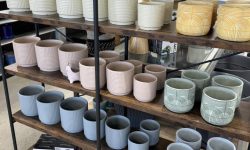

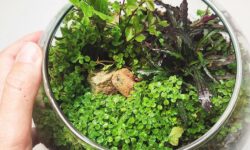


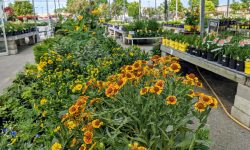
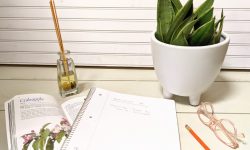
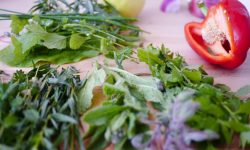
 1. Eating Herbs
1. Eating Herbs
